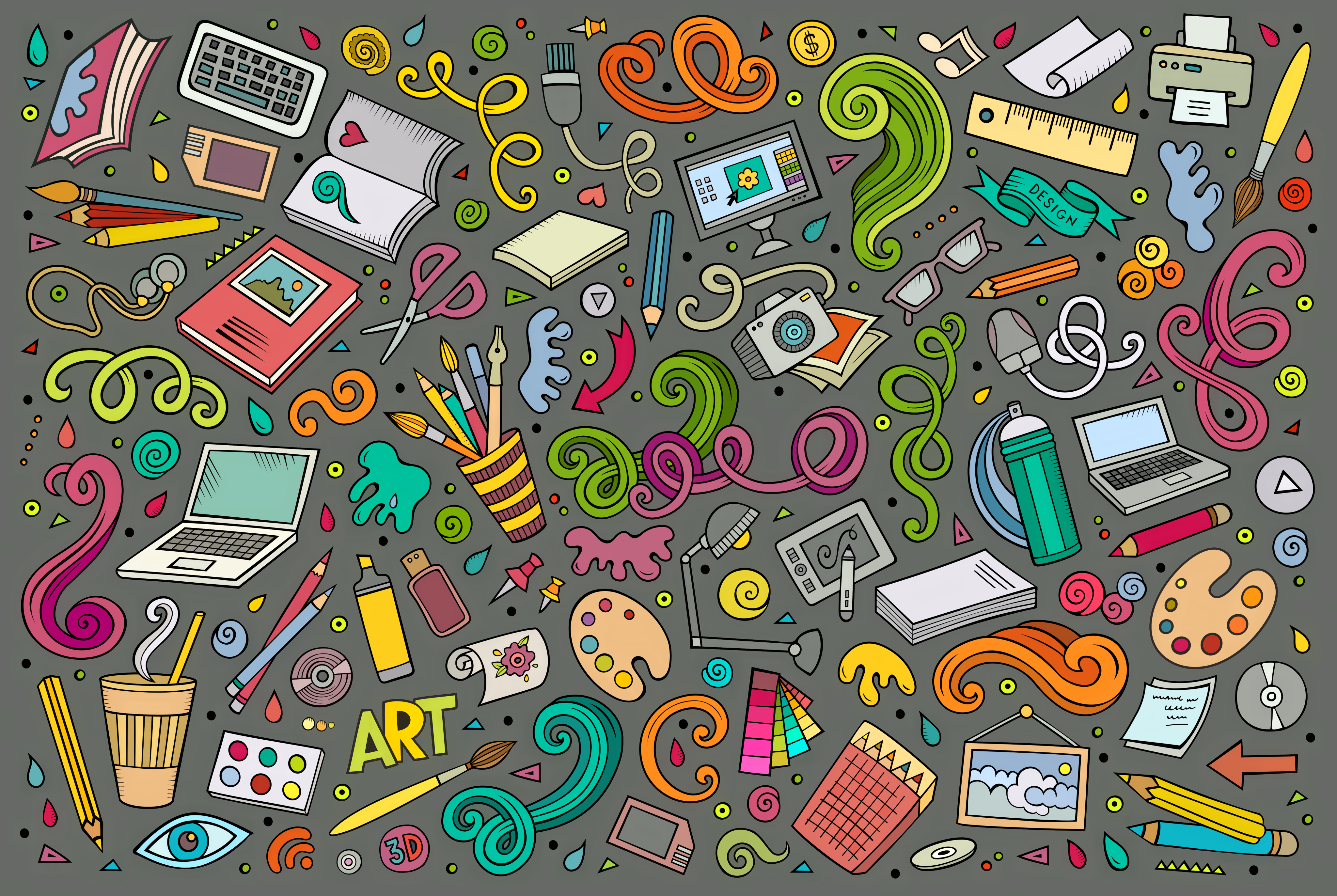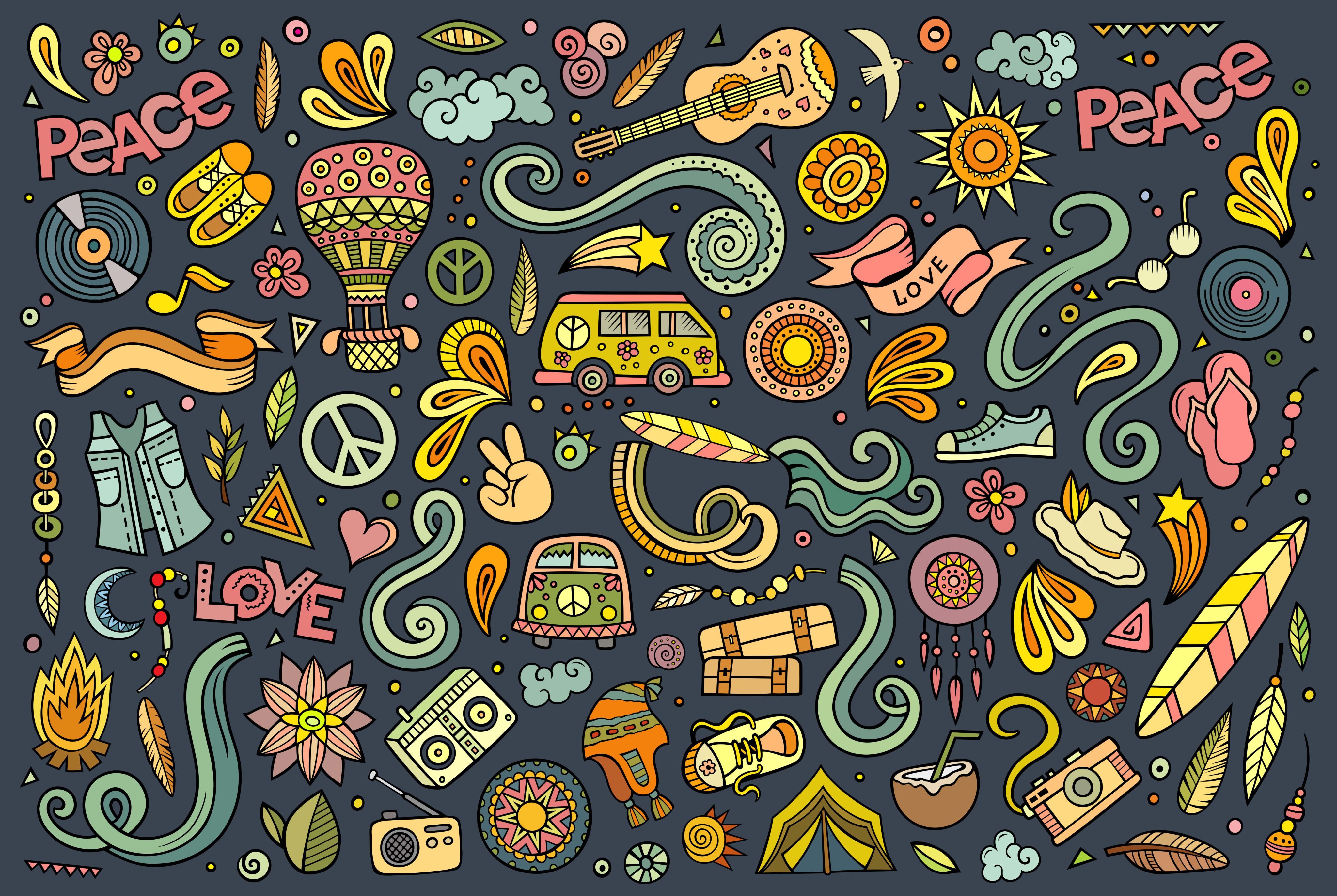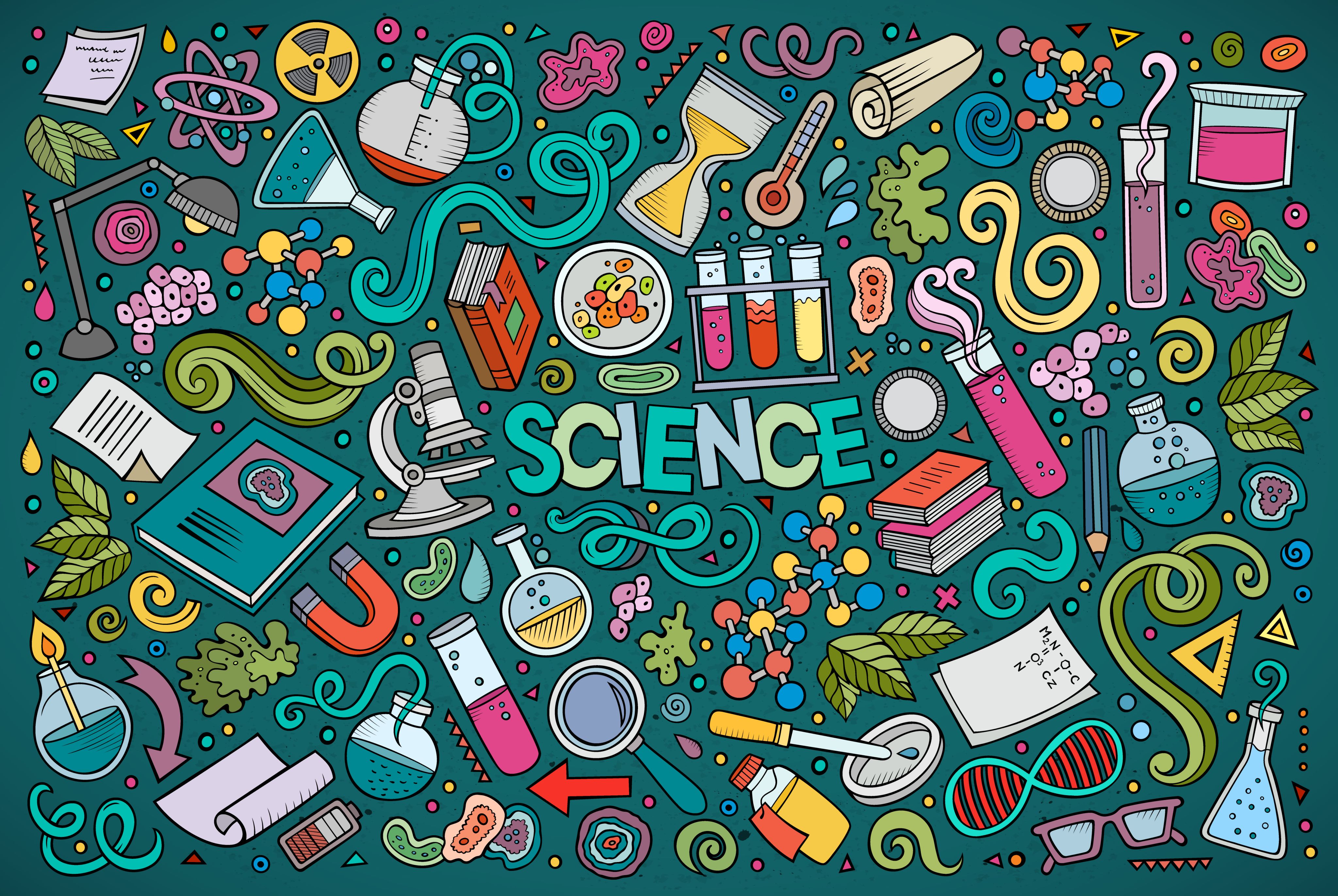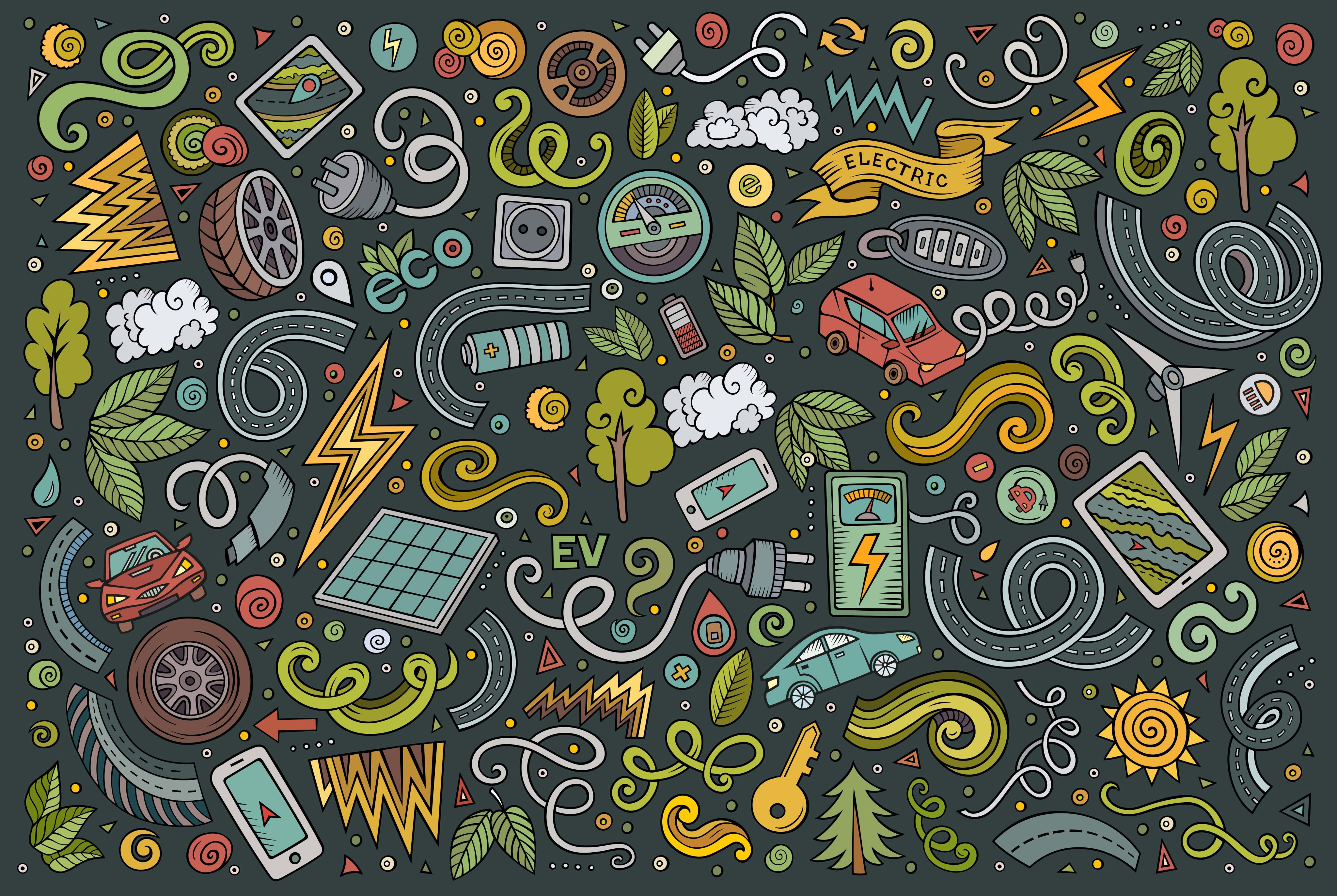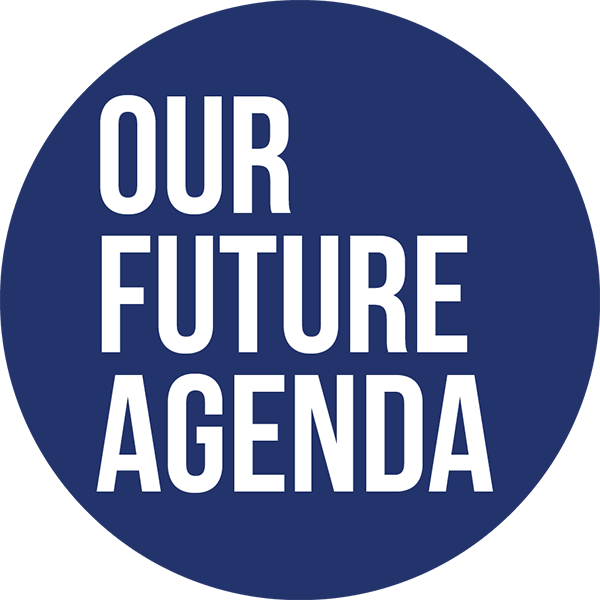Journey to the Summit of the Future

In a world that is constantly evolving, we find ourselves at the precipice of a transformative event that promises to redefine our collective future — the Summit of the Future.
Scheduled for September 2024, this summit is a beacon of hope in an era fraught with complex challenges and abundant opportunities. It's a global call for change, a platform for dialogue, with young people and young countries as a catalyst for action.

How it all began
The journey to the Summit of the Future can be traced back to a pivotal moment in history—the 75th anniversary of the United Nations in 2020.
Amidst a global pandemic, escalating climate change, rapid technological revolutions, and persistent barriers to achieving the Sustainable Development Goals (SDGs), the UN Member States recognized a shared urgency for global governance reform.
This call for change was captured in Resolution A/RES/75/1, setting the stage for a new chapter in international cooperation.

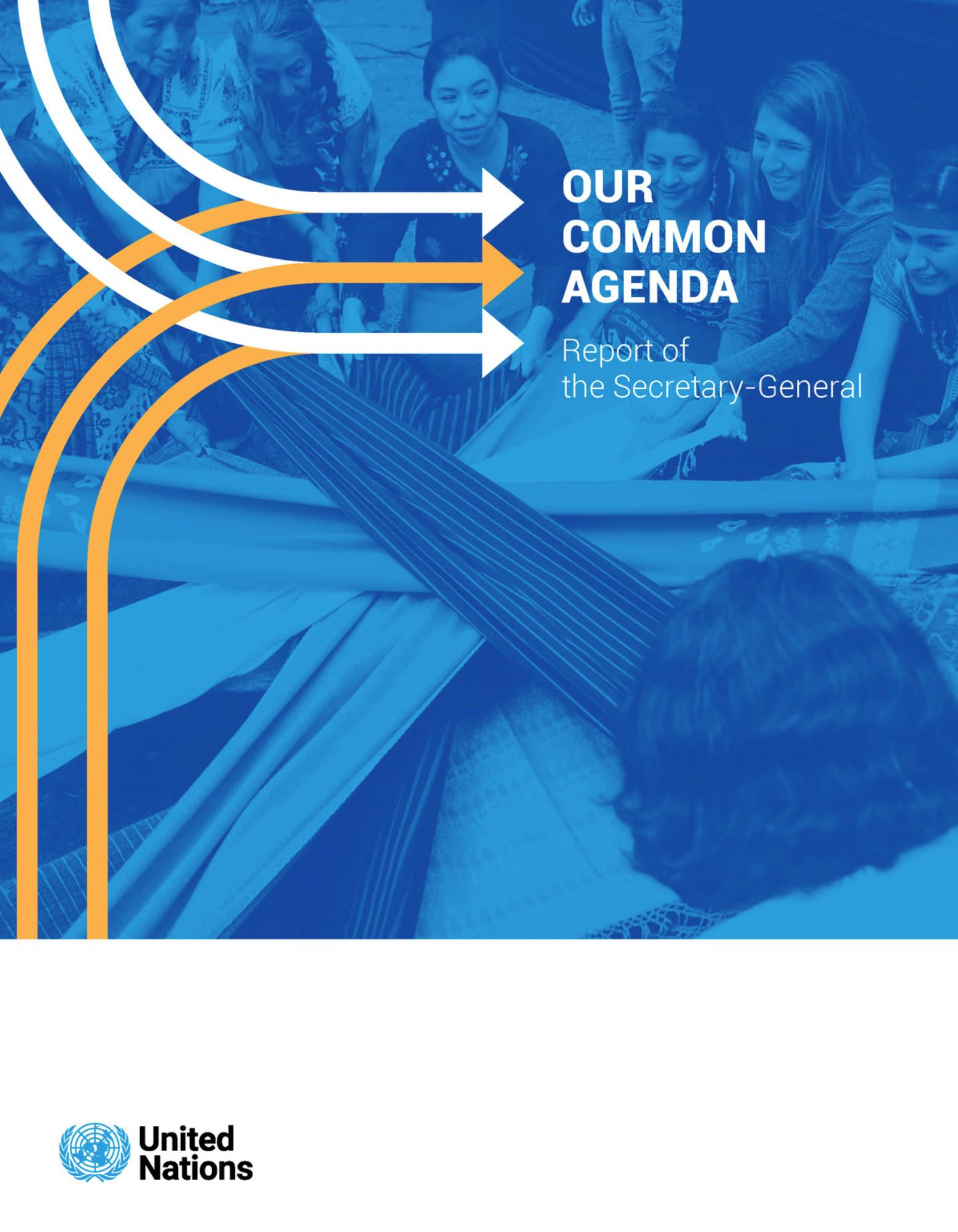
Our Common Agenda is the Secretary-General's vision for the future of global cooperation. It calls for inclusive, networked, and effective multilateralism to better respond and deliver for the people and planet and to get the world back on track by turbocharging action on the SDGs.
Our Common Agenda is the Secretary-General's vision for the future of global cooperation. It calls for inclusive, networked, and effective multilateralism to better respond and deliver for the people and planet and to get the world back on track by turbocharging action on the SDGs.
Our Common Agenda
In response to this call, the UN Secretary-General unveiled "Our Common Agenda," a comprehensive blueprint for the future of the UN.
This visionary report underscores the need for solidarity among nations and generations. It advocates for the rejuvenation of the multilateral system, acceleration of existing commitments, and bridging gaps in global governance.
2024 Summit of the Future
At the heart of Our Common Agenda is an ambitious proposal— the Summit of the Future.
This summit is not just another event; it's a once-in-a-generation opportunity to reimagine global governance.
Under the theme "Summit of the Future: Multilateral Solutions for a Better Tomorrow," the summit aims to foster collaborative problem-solving and forward-thinking multilateralism. Building on the momentum from the 2023 SDG Summit, it aspires to culminate in a groundbreaking Pact for the Future.
Pact for the Future
Negotiated by Member States, the pact is organized into five key chapters:
- Sustainable Development and Financing for Development: This chapter highlights the need to prioritize sustainable development by measuring impact beyond GDP and reshaping international cooperation.
- International Peace and Security: It emphasizes the importance of strengthening global security efforts and fostering trust, solidarity, and peace among nations.
- Science, Technology, Innovation, and Digital Cooperation: It explores the potential of science, technology, and digital cooperation for global progress while ensuring a just digital transition.
- Youth and Future Generations: It focuses on empowering the youth, expanding their participation in decision-making, and considering the needs of future generations.
- Transforming Global Governance: It advocates for reforms in global governance structures to make them more inclusive, transparent, and accountable.
Optional Annexes: The Pact may also include a global digital compact and a declaration on future generations as annexes.
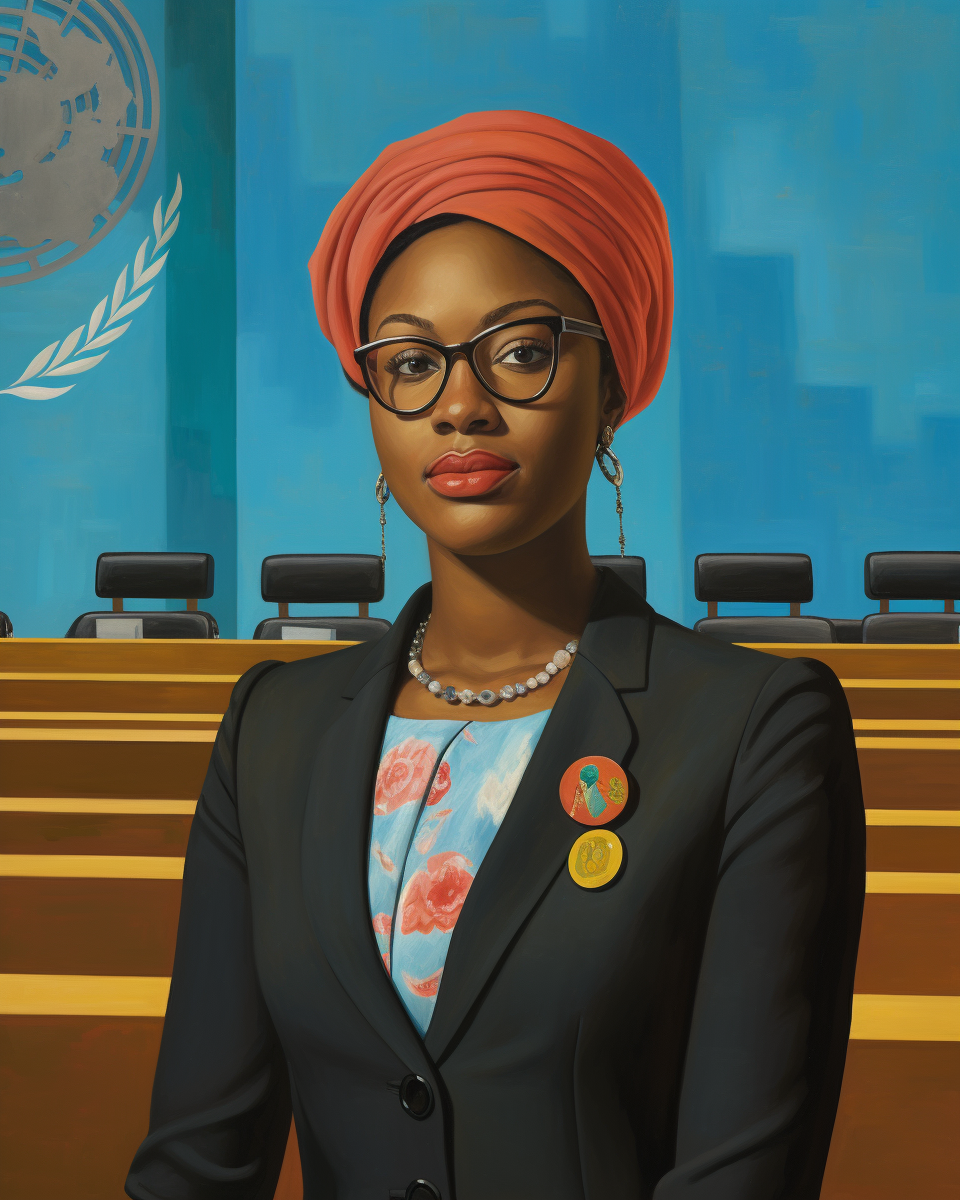
Key Proposals
The Summit of the Future is characterized by a package of specific proposals aimed at both accelerating the achievement of the SDGs and addressing future challenges.
These proposals are outlined in the 11 Policy Briefs issued by the Secretary-General summarized in Our Common Agenda Decoded.
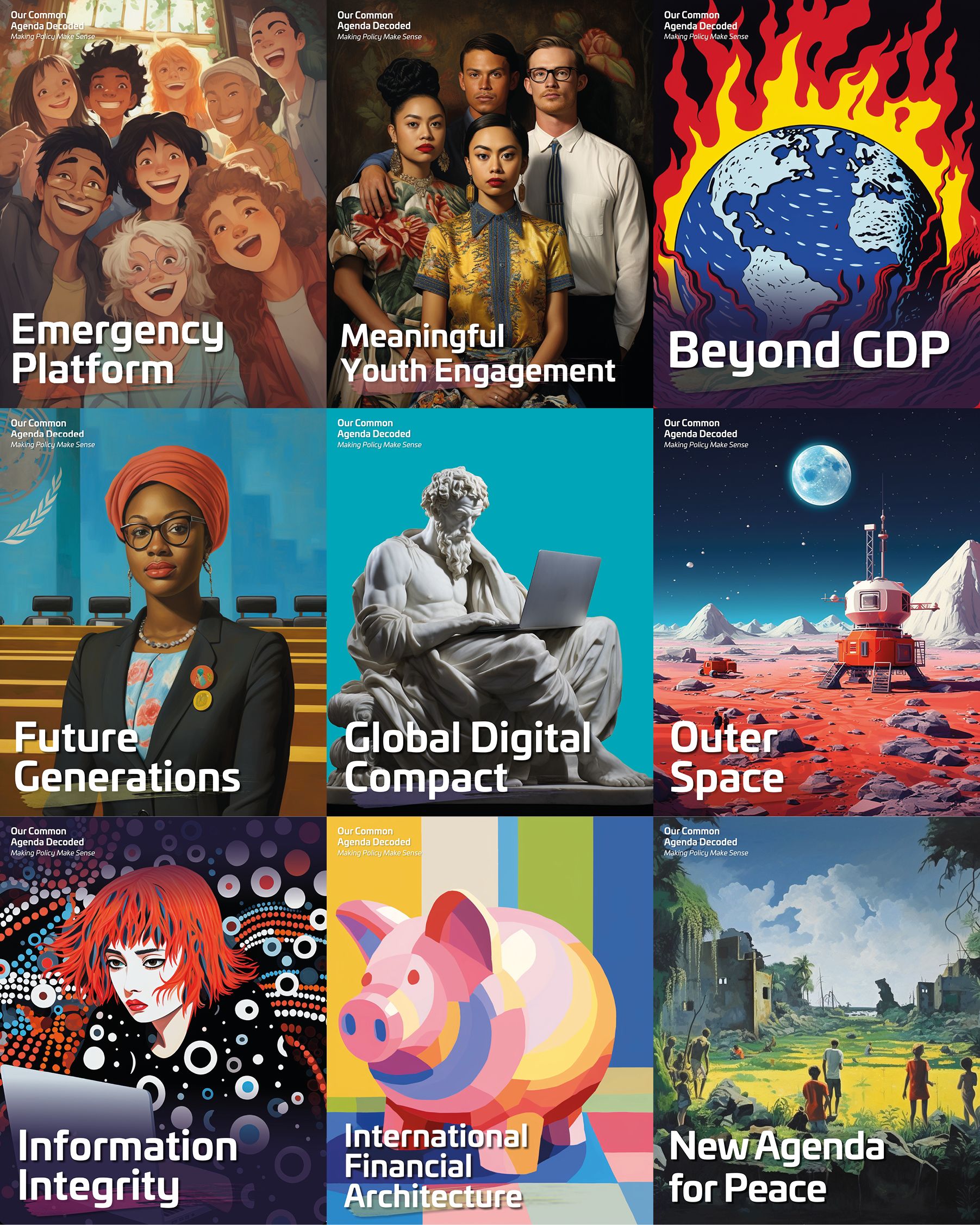
HLAB’s Six Shifts
The High-Level Advisory Board on Effective Multilateralism’s (HLAB) report, A Breakthrough for People and Planet, proposed a pathway beyond the Summit of the Future to ensure the global system harnesses the collective efforts of many different actors towards a collective mission and decision-making is distributed and networked.
It set out six transformative shifts: Rebuild trust in multilateralism through inclusion and accountability, Deliver for people and planet by regaining balance with nature and providing clean energy for all, Ensure sustainable finance that delivers for all, Support a just digital transition that unlocks the value of data and protects against digital harms, Empower equitable, effective collective security arrangements, and Strengthen governance for current and emerging transnational risks.
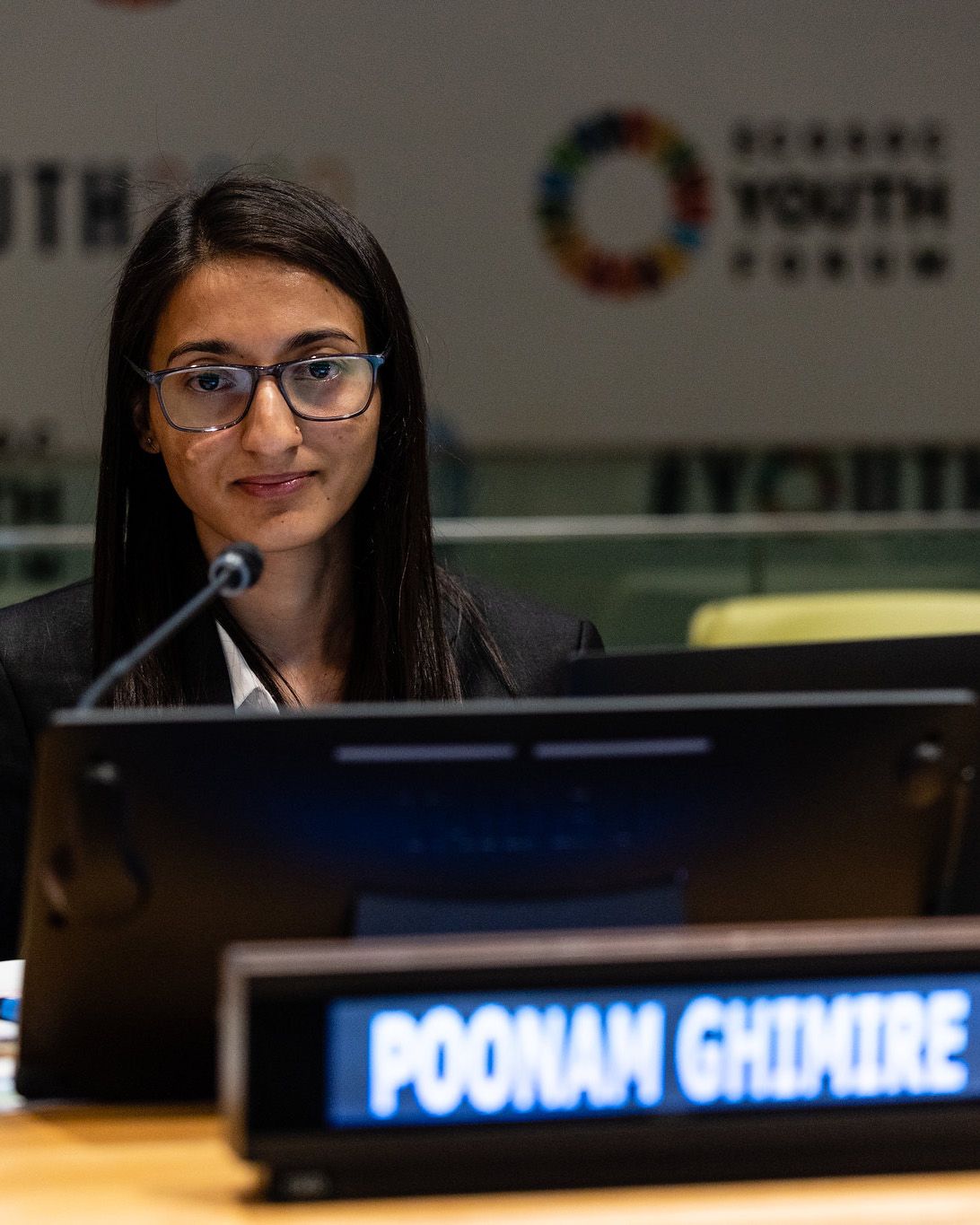
Former UN Foundation Next Generation Fellow Poonam Ghimire was a member of the United Nations Secretary-General's High-Level Advisory Board on Effective Multilateralism
Former UN Foundation Next Generation Fellow Poonam Ghimire was a member of the United Nations Secretary-General's High-Level Advisory Board on Effective Multilateralism
Takeaways from the Preparatory Meeting
On 21st September 2023, the President of the General Assembly convened a Preparatory Ministerial Meeting for the Summit of the Future, a platform for Member States to share their vision and priorities for the summit.
The interventions focused on several key themes:
Reinforce, Reaffirm, and Redouble
There was unanimous agreement that commitment to the Sustainable Development Goals (SDGs) is crucial for unlocking our future's full potential. Strengthened multilateralism was emphasized as the means to address global challenges effectively.

Emphasize Youth Engagement
The importance of meaningful youth engagement was a recurring theme, with the principle of 'nothing about us, without us' reaffirmed. This emphasis underscores the recognition that the youth are not just inheritors of the future, but active contributors to shaping it.
Digital Advancement & Cooperation
The detrimental economic and social implications of the digital divide were brought to the forefront, emphasizing the urgency of digital advancement and cooperation.

Financial Reforms and Economic Considerations
Calls for international financial reforms and a more equitable global economic system echoed across multiple interventions.
Conflict and Global Cooperation
In the face of escalating violence and conflict, the importance of international cooperation, solidarity, and UN reform was emphasized, particularly focusing on the need to reform the UN Security Council.

Mapping the Pact
The analysis below explores the intersection of Pact's chapters with the 11 Our Common Agenda Policy Briefs and HLAB’s six transformative shifts alongside the 17 SDGs – all of which will be explored by the Engine Room for the Future.
It offers a clear understanding of how these strategies interconnect to address global challenges, emphasizing the implications of working with and for young people and young countries.

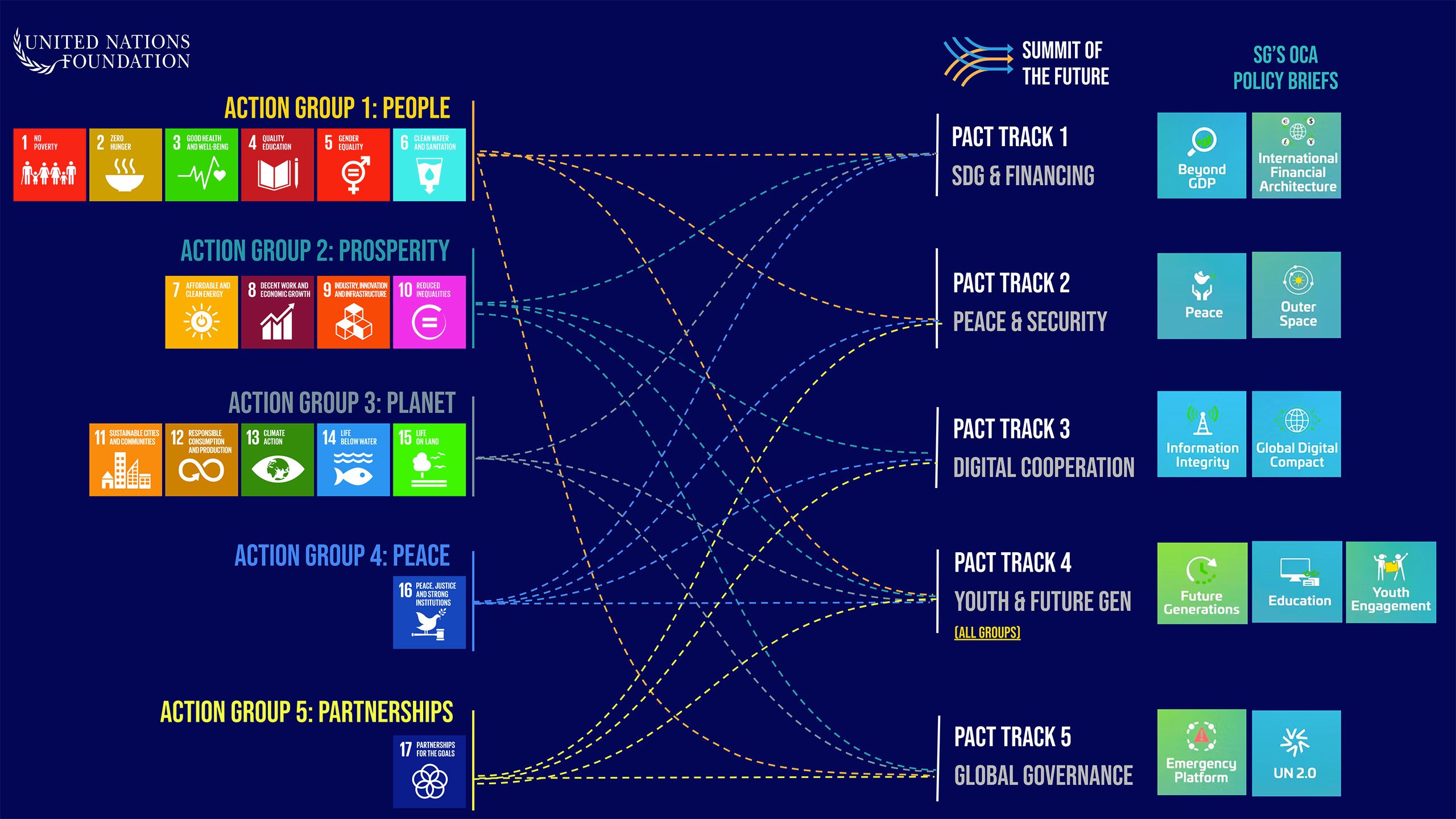
Pact for the Future
Zero Draft
Germany and Namibia, co-facilitators of the Summit, released the zero draft of the Pact for the Future on Friday, January 26. The draft is intended to serve as a starting point for the intergovernmental deliberations this year, with the ultimate aim of adopting an ambitious, concise, action-oriented Pact for the Future, per resolution 76/307.
ZERO DRAFT OF THE PACT FOR THE FUTURE
Key ideas and proposals are summarized below:
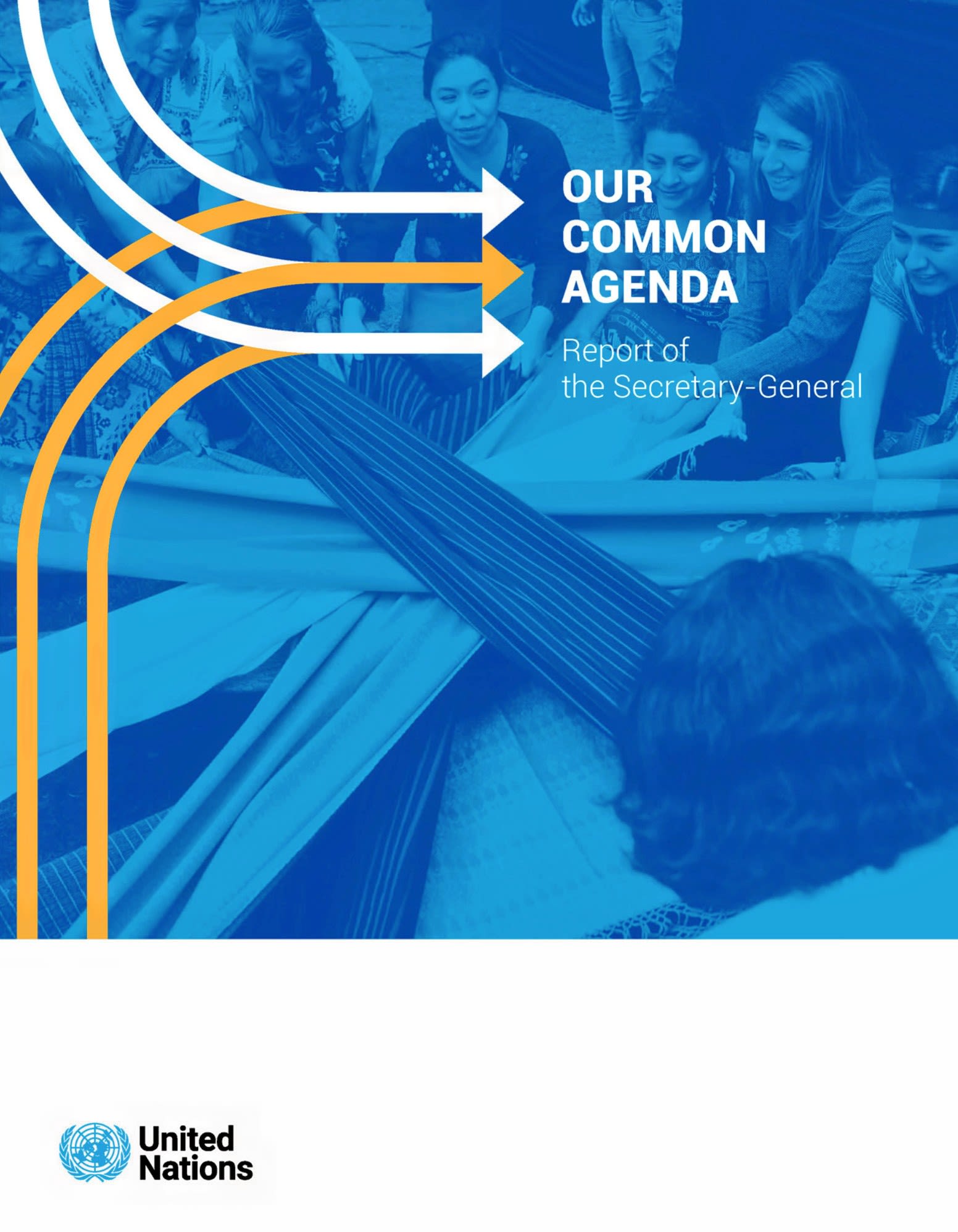
Chapeau
Addressing Global Crises: The zero draft points out the big problems we're facing right now, like poverty, hunger, climate change, the impacts of technology, and even wars. These problems are all connected, making everything more unstable and difficult.
Working Together: The zero draft makes it clear that no single country can solve these problems on its own. It's calling for all nations to work together because these global problems need everyone's effort. It also points out that the way the world is currently organized isn't effectively handling these challenges.
Changing for a Better Tomorrow: The zero draft says we need to change the way nations work together to better handle our current and future challenges. This means updating our institutions, sticking to international agreements, and rebuilding trust between countries. It also stresses the importance of money in achieving goals like sustainable development.
Everyone Matters: The zero draft frequently talks about making sure everyone is included and treated fairly when we're solving world problems. It emphasizes that all the good stuff coming from tech advances and knowledge should be available to everyone, especially those who are most in need. This goes hand-in-hand with sustainable development, which is all about growing the economy, making sure everyone is included, and protecting the environment.
Human Rights First: The zero draft reminds us that human rights are really important for creating peaceful and fair societies where everyone is included. It talks about how all human rights are connected and equally important, including the right to development. The document promises to fight against racism, discrimination, and intolerance, and to protect human rights for us and future generations.
Fighting Discrimination: The document promises to work harder to fight against racism, discrimination, xenophobia, and related intolerance. It recognizes that women and girls face specific challenges and commits to actions to stop violence and discrimination against them. It points out that gender equality is not just a basic human right, but it's also really important for a peaceful, prosperous, and sustainable world.
Boosting Gender Equality: The zero draft focuses a lot on making sure women and girls are treated equally and empowered. It restates commitments to international agreements like the Beijing Declaration and the Platform for Action. The document makes it clear that having women fully involved is key for sustainable development and resolving conflicts, highlighting the need to consider gender in all areas.
Chapter 1: Sustainable Development and Financing
How We Pay for a Better World
2030 Plan for a Better Future: The zero draft is all about sticking to our plan to make the world better by 2030. This plan is really important because it helps us deal with the problems we're facing now and makes sure we're looking out for future generations. The goal is to make sure no one gets left behind.
Dealing with Environmental Problems: The zero draft is clear that environmental issues are some of the biggest threats to making the world better. It promises that we'll work harder to follow United Nations agreements about the environment, dealing with problems like climate change, losing plants and animals, pollution, and turning fertile land into desert.
Doing Something About Climate Change: The zero draft recognizes that we need to act fast to tackle climate change. It talks about the need to drastically cut down on greenhouse gases to limit global warming to 1.5°C. The goal is to have net-zero emissions by 2050, which means we'll need to stop using fossil fuels and set ambitious targets to reduce emissions.
Paying for Environmental Protection: The zero draft acknowledges that developing countries need money to deal with environmental challenges. It highlights the benefits of investing in clean energy and sustainable practices. It also recognizes that developed countries need to financially support these efforts. The document emphasizes the need to get funding mechanisms up and running to deal with the losses and damages caused by climate change and consolidate climate finance structures.
Chapter 3. International Peace and Security
Keeping the Peace and Staying Safe
Changing Security Landscape: The zero draft recognizes that the world's safety is constantly changing, with old threats like nuclear war coming back. It calls for everyone to work together and be flexible in keeping peace and staying safe. This means dealing with new threats in different areas, like online and in space.
Boosting Peace and Solving Conflicts: One of the main goals is to improve the United Nations' ability to keep the peace, mediate disputes, build peace after conflict, and fight terrorism. It encourages using all the tools the UN has to address the root causes of violence and conflict. This goes beyond just military solutions and looks at political, social, and economic aspects of conflict too.
Disarmament and Controlling Weapons: The zero draft is very worried about the breakdown of international rules on controlling weapons and disarmament. It emphasizes the need for agreements that benefit humanity and reduce suffering from armed conflicts. This includes strengthening measures against the spread of weapons of mass destruction and small arms, focusing on following international humanitarian law.
Protecting People and Allowing Aid: The document highlights a shared commitment to protecting people during armed conflicts and making sure aid can reach those in need according to international law. The zero draft recognizes the terrible impact of conflicts on people and infrastructure. It supports ways to reduce harm to civilians and hold those responsible for breaking international law accountable.
Women, Peace, and Security: The zero draft restates commitments to the women and peace and security agenda, recognizing the crucial role women play in peace processes and resolving conflicts. It underlines the importance of their full, equal, and meaningful participation in achieving lasting and sustainable peace.
Youth, Peace, and Security: The zero draft also focuses on the role of young people in peace and security. It is committed to allowing their meaningful participation in preventing conflict, building peace, and processes after conflict. Recognizing that young people and children are vulnerable in conflict situations, the draft promises to protect them.
Chapter 4. Science, Technology, Innovation, and Digitial Cooperation
Using Tech to Drive Progress
Progress and Innovation: The zero draft recognizes that science, tech, and innovation have a huge potential to help us achieve our goals for a better world. It promises to boost cooperation in the digital world to make sure tech advancements benefit everyone, not just a few.
Closing the Tech Gap: The zero draft realizes there's a big difference between developed and developing countries when it comes to access to and benefits from tech. It calls for more effort to close this gap, making it easier to share tech, encouraging open science, and promoting joint research and development.
Responsible and Inclusive Tech: The zero draft stresses the need for tech to be centered around people, reflect universal human values, and protect our planet. This means setting up norms, rules, and principles to guide how tech is designed, developed, and used, especially in military applications.
Supporting Women in Tech: Recognizing the gender digital divide, the zero draft emphasizes the importance of women being actively involved in the tech sector. It promises to use tech to improve the lives of women and girls, narrow the development and digital divides, and deal with risks coming from tech advancements.
Finding Resources for Innovation: The zero draft asks for more financial resources and better ways to support science, tech, and innovation in developing countries. This includes more funding for research related to goals for a better world and building ability in all regions to contribute to and benefit from such research.
Chapter 4: Young People and Future Generations
Giving Power to the Voices of Tomorrow
Recognizing Young People as Change Makers: The zero draft recognizes that young people play a key role in bringing about change, contributing significantly to tackling global challenges like climate action, social justice, and innovation. It underlines the importance of investing in our young people, especially through education and training, to unlock their potential for a better society.
Young People's Rights and Needs: The zero draft restates how important it is to respect the rights of children and young people, as set out in the Convention on the Rights of the Child. It acknowledges that our young people's well-being is closely tied to their right to health, including sexual and reproductive health.
Working with and for Young People: The zero draft commits to strengthening the meaningful involvement of young people in making policies and decisions at all levels. It recognizes the challenges and barriers that stop young people from participating in political and public affairs and calls for these obstacles to be removed.
Investing in Young People: The zero draft suggests setting up a Global Youth Investment platform, designed to attract and channel funding towards programs focused on young people. It encourages countries to set up formal national bodies to consult young people, providing a platform for young people to get involved in making policies and decisions.
Delivering for Future Generations: The zero draft focuses on making sure that global governance and decision-making processes consider the long-term needs and interests of future generations. It promises to adopt policies and actions that prevent foreseeable harm to these generations and protect their interests, including the Declaration on Future Generations.
Chapter 6. Transforming Global Governance
Creating a More Effective, Inclusive World Order
Reimaging the United Nations: The zero draft imagines a big change in global governance, focusing on making the United Nations system more effective, inclusive, and adaptable. This change aims to better handle the complex challenges of today's world while maintaining principles of fairness and justice.
Changing the Security Council: A big part of this change involves changing the United Nations Security Council. It recognizes the pressing need for the Security Council to reflect the geopolitical realities of the 21st century, both in its makeup and how it works. This includes expanding representation to include a wider range of voices and perspectives, especially from developing countries.
Reviving the General Assembly and ECOSOC: The document emphasizes the need to revive the work of the General Assembly and the Economic and Social Council (ECOSOC). It suggests enhancing their roles in policy-making, coordination, and dealing with emerging issues. The goal is to create a more dynamic and responsive United Nations that can proactively tackle global challenges.
Engaging with Diverse Players: Recognizing the value of diverse perspectives and expertise, this pact commits to widening the participation of various players beyond states. This includes civil society, the private sector, and regional organizations in the United Nations' processes. It aims to use the collective wisdom and resources of the global community.
Focusing on Building Peace and Human Rights: The zero draft repeats a commitment to strengthening the Peacebuilding Commission and the human rights pillar of the United Nations. This includes improving the ability of these bodies to provide guidance, support peace-building efforts, and promote and protect human rights worldwide.
Dealing with Global Shocks: The document outlines a plan for handling complex global shocks, emphasizing principles of equity, solidarity, and partnership. It suggests developing an Emergency Platform for coordinated responses to crises affecting multiple regions, ensuring respect for sovereignty, and complementing existing United Nations organs.
